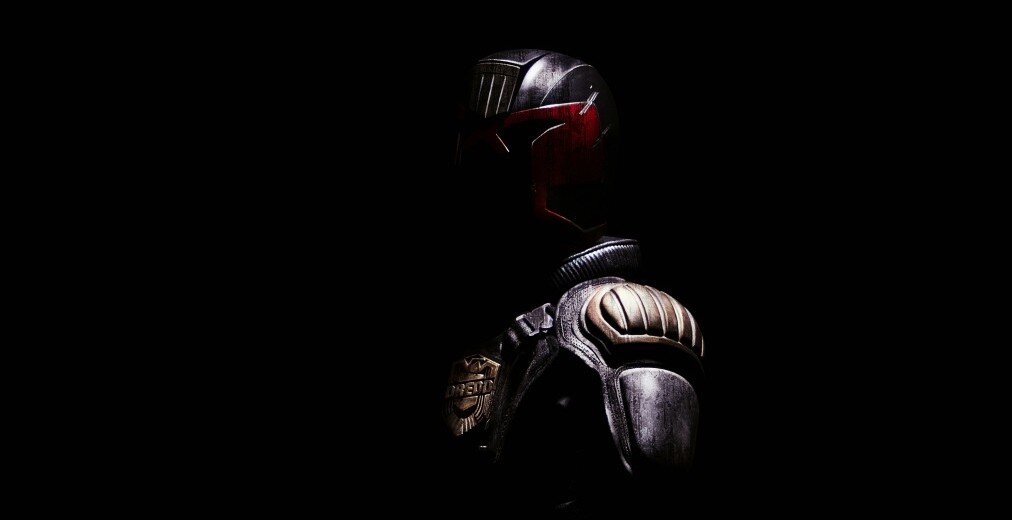Dredd (3D)
Comic book hero Judge Dredd last appeared on film in the 1995 Sylvester Stallone vehicle Judge Dredd. While it has its fans (personally we love the design), the film was very much a standard mid-90s sci-fi flick, akin to Demolition Man, and far from the spirit of the original 2000AD comics. Now 28 Days Later scribe Alex Garland and Vantage Point director Pete Travis have teamed up to bring us what they hope is a truer rendition.
For those of you not au fait with the background, we are in a near future where most of the USA is a nuclear wasteland. Judge Dredd is a member of the peacekeeping Justice Department, the body which oversees Mega-City One, an urban sprawl which covers much of the Eastern Seaboard. Filmed in Johannesburg, the city of this film is a horrible near-reality, where grimly familiar streets are over-shadowed by gargantuan ‘city blocks’, effectively vertical cities in themselves. Dirt is definitely the order of the day – the streets, the housing, the people, all coated in dust and grime.
Garland’s simple but effective plot sees Karl Urban’s Judge Dredd trapped in a city block – the sweetly named Peach Trees – ruled over by the despotic and psychotic Ma Ma (Lena Headey), an ex-prostitute turned drug baron responsible for hawking the latest must-have narcotic, Slo-Mo. Teamed up with sensitive, telepathic rookie Anderson (Olivia Thirlby), Dredd must work his way through floors full of violent criminals out for his blood and take down Ma Ma, who does not look kindly on the law knocking at her door.
Urban is perfectly cast as Dredd, playing him rough but likeable, like his Bones McCoy after a heavy night’s drinking. Purists will be happy to know that we never see his face, a sacred cow of the comics slaughtered in the 90s version. Thirlby is equally good in her role, handling the clichés of the rookie with aplomb. She particularly shines in her interactions with Wood Harris’s nasty criminal, engaging in some nicely twisted one-upmanship. The real stand-out, though, is Lena Headey. With her battle scars and crack-addict teeth, Ma Ma is a suitably demonic foe for Dredd, and Headey rules every scene she appears in. One particular shot of Ma Ma with a mouth full of blood and a terrible grin will remain with you long after the others have faded from memory (though this is also to do with the context).
There are images of real beauty to be found amongst the grit – the scenes showing the perspective of people under the effects of Slo-Mo are wonderfully idiosyncratic (the drug causes the user to experience life at one tenth its normal speed, so the visuals are both slow-motion and very trippy). Lena Headey’s introductory scene, in a bath with water arcing around her in slow-motion, catching the light and exploding in rainbow colours, is wonderful. The relatively low budget actually helps the look of the film, with low-tech and dirt being far more in keeping with the source material than anything more polished. The motorbike chase which begins the film benefits from featuring actual stunts rather than CGI. You really feel that people are going to get hurt, and they certainly do! The film has an 18 certificate and the makers waste no opportunity to capitalise on this – the gore is realistic and horrible and every bit as copious as fans of 2000AD will be expecting. We get skinnings, burnings, bullets to faces and an awful lot of splatter.
If one criticism can be levelled against the film, it is that the 3D adds nothing to the experience, and indeed from where we were sitting actually diminished the effect of the Slo-Mo sequences, blurring the edges of the floating elements and dulling the vivid colour. The only really successful moment of 3D is in the closing credits, which shows how relevant the process is in the film. Time to give it a rest!
Gritty and brutal, this is Dredd as it should be done. If this doesn’t get a sequel then there really is no justice.
4.5/5


